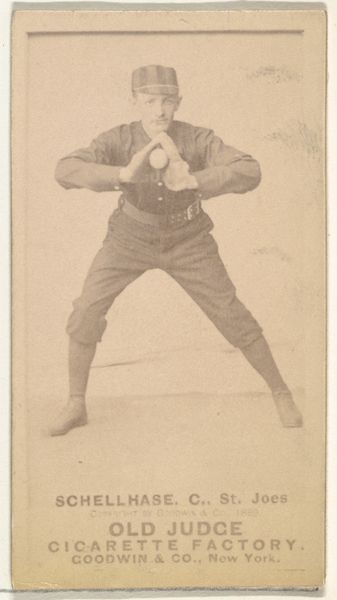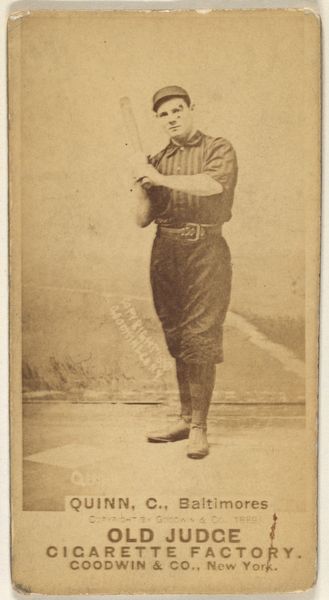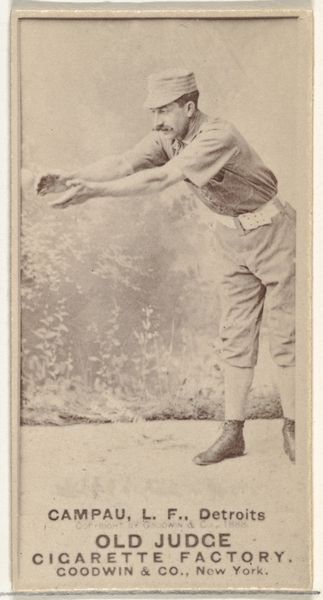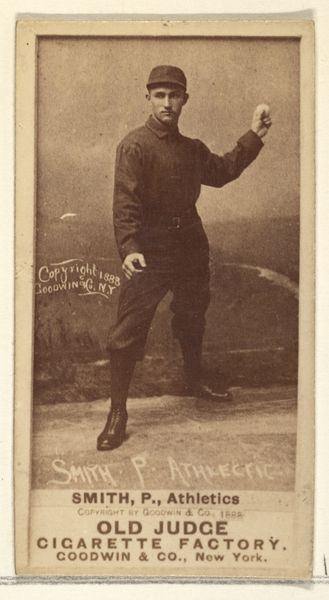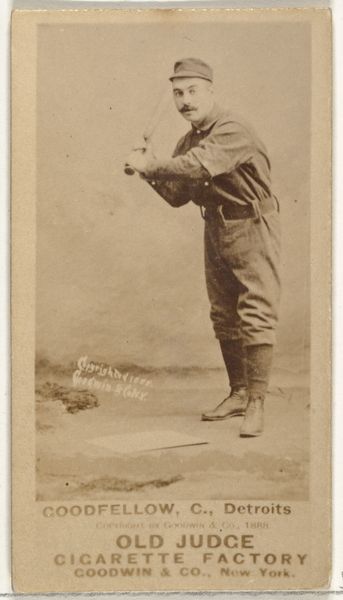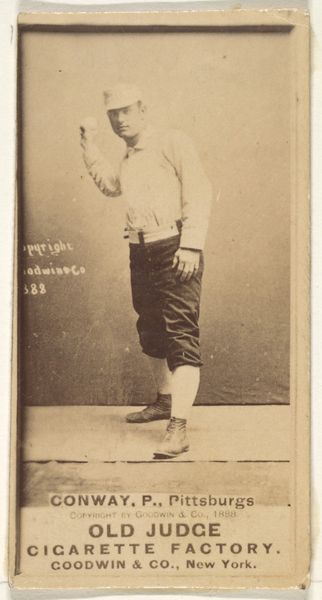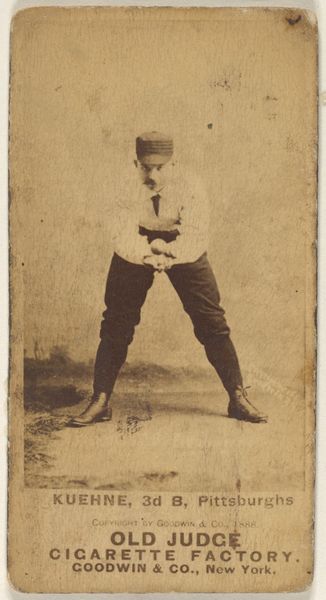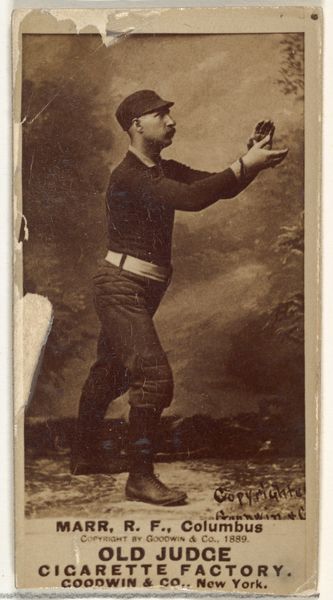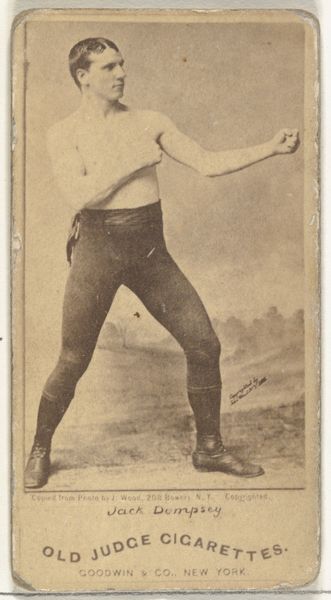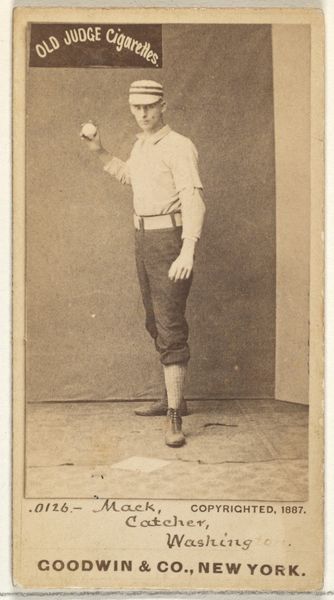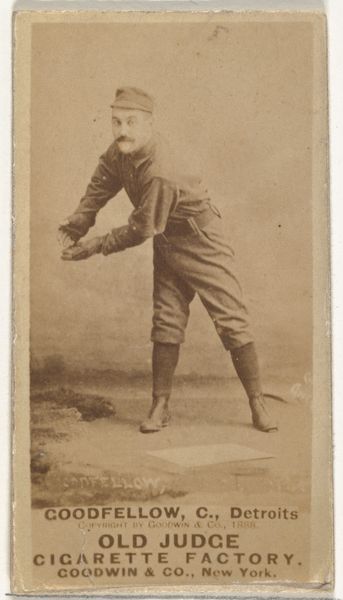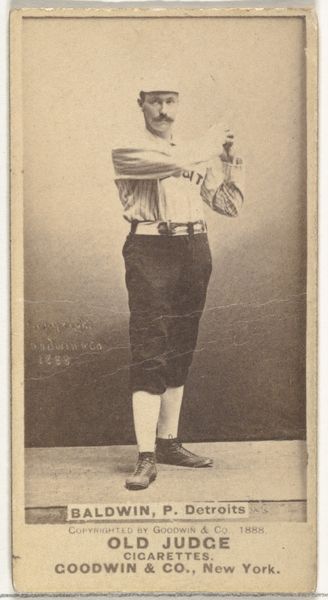
Philip Louis "Phil" Knell, Pitcher, St. Joseph Clay Eaters, from the Old Judge series (N172) for Old Judge Cigarettes 1889
0:00
0:00
drawing, print, photography
#
portrait
#
drawing
# print
#
impressionism
#
baseball
#
photography
#
19th century
#
men
#
realism
Dimensions: sheet: 2 11/16 x 1 3/8 in. (6.9 x 3.5 cm)
Copyright: Public Domain
Curator: This is a baseball card from the Old Judge series, circa 1889, featuring Philip Louis "Phil" Knell, a pitcher for the St. Joseph Clay Eaters. It was produced by Goodwin & Company, a cigarette manufacturer. Editor: The sepia tone and stiff pose give it an austere feeling. But there’s something appealing in the texture of the print. It feels almost tangible, you know? Like you could feel the grain of the paper. Curator: Indeed. These cards were printed using the albumen process, a photographic printing technique popular in the 19th century. It’s a print made from an egg white base. Editor: Albumen? Fascinating. It really emphasizes the physical making of an image, the process itself becoming part of the art. The labor involved—collecting the eggs, preparing the emulsion… it's far removed from today’s digital imagery. Think about who was involved and how it might represent mass labor versus celebrity status. Curator: Precisely! These cards weren't just about baseball. They were about advertising, consumerism, and the burgeoning celebrity culture of the late 19th century. Baseball players becoming brands... Editor: And brands fueling the popularity of baseball. I find it compelling how an everyday object like a cigarette card can be a window into so many layers of society at the time, especially about production and access. Imagine the appeal for people who wanted some semblance of ownership over an athlete. Curator: And the distribution—inserted into cigarette packs, imagine the reach into various social classes! The act of collecting, trading... these cards fostered a sense of community and competition, all orchestrated by the marketing strategies of a tobacco company. The card transformed baseball players into public figures of that era. Editor: Looking at this image, it feels distant, yet deeply rooted in materiality and labor. You can't separate its historical value from its method of creation. The photo is an industrial product as much as a collectible artifact. It's interesting to think about its past, and all the lives, the circulation, the values that have shaped the artifact over the course of time. Curator: I agree; viewing this card opens avenues to reflect on a variety of historical contexts and offers insights into labor, the business of sports, and even early advertising techniques. Editor: Absolutely, it prompts you to look beyond just the surface-level appeal.
Comments
No comments
Be the first to comment and join the conversation on the ultimate creative platform.
